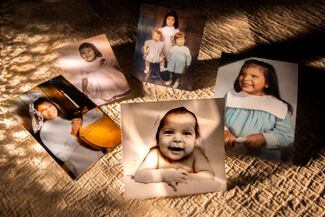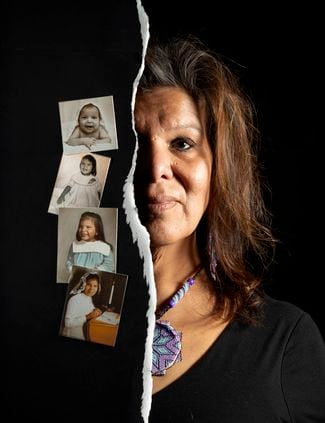Thousands of Native children were adopted in the 1960s as a government plan of forced assimilation. This woman was one of them.
 |
While visiting the Tekakwitha Nursing Home to sing for residents, 13-year-old Denise Owen was led away from the rest of her boarding school group by a nun. A special surprise awaited her.
There, in another room in the Sisseton, S.D., facility, was her newborn sister, Rose Anne. Denise got only a glimpse of the infant, lying in a bassinet in a long-sleeve shirt and a diaper, before another nun ordered her to leave. Denise was not supposed to see her sibling, soon to be adopted.
It would be 50 years before they saw each other again.
Rose Anne, who would be raised by a Glenside dentist and his wife, became a child of the country’s American Indian adoption era, a decades-long forced assimilation of Native children first established under the Indian Adoption Project, which started in 1958 and evolved to include 50 private and public placement agencies across the United States and Canada, where the so-called Sixties Scoop was coined to describe the mass removal of children from Native homes. During the next 20 years, almost 13,000 Native children would be adopted.

According to a 1969 report by the Association on American Indian Affairs, between 25% and 35% of all Native children were placed in adoptive homes, foster homes, or institutions; and about 90% of those children were being raised by non-Natives.
That was the case for Rose Anne, who, at the age of 3 months, was handed over to Salvatore and André Petrilli. The white couple of Italian and Irish descent had struggled to have their own biological children, and it was André's interest in American history and a phone conversation with a priest from St. Joseph’s Indian School in Chamberlain, S.D., that led her to seek a Native adoption through Catholic Charities.
Eventually, a new birth certificate reflected the new name of Kelley Elizabeth Petrilli, the child of two Caucasian parents. Her American Indian heritage was wiped away on paper. A Montgomery County Orphans Court clerk with the last name of Custer gave the final stamp of approval to the adoption.
“When I was younger, I wanted to be white. I still feel guilt about that,” said Bashew, who lives in Meadowbrook. “I just wanted to fit in and be like my sisters. … I did not like being tall and brown and different.”

PLEASE SHARE THIS POST with other American Indian Adoptees... TLH



